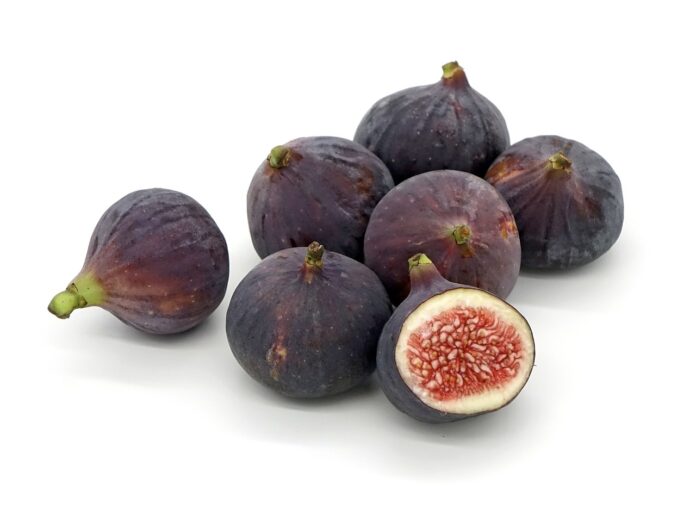Figs are a unique and ancient fruit with a rich history of cultivation dating back thousands of years. Native to the Middle East and western Asia, figs spread through ancient trade routes, becoming one of the earliest domesticated fruit trees. Botanically, figs aren’t considered true fruits but are actually “inverted flowers” that develop into a seed-filled fleshy pod. They rely on a specialized pollination process involving fig wasps, which enter the fig’s narrow opening to fertilize its hidden flowers—a fascinating example of mutualism in nature.
Interesting Facts About Figs
- Figs are considered one of the earliest cultivated fruits, dating back to around 9400-9200 BC in the Jordan Valley. This suggests they were grown even before wheat and barley.
- These fruits are technically not fruits but inverted flowers. The fig tree has a unique pollination process that involves tiny wasps, which enter the fig to lay eggs, aiding in the fertilization process.
- Figs have deep mythological significance in various cultures. In ancient Greece, they symbolized fertility, while in Hindu mythology, fig trees are seen as sacred, often associated with deities or spiritual symbolism.
- Nutritionally, figs are a powerhouse. They contain high levels of fiber, calcium, magnesium, and antioxidants like Vitamin A, offering benefits for heart health, digestion, and skin.
- In the culinary world, figs can be eaten fresh or dried. They are commonly used in baking, jams, and desserts, while their leaves can be used in teas and as wraps for cooking.
- Fig trees can grow large and provide dense shade, making them valued ornamental plants in suitable climates, especially in the Mediterranean and Middle Eastern regions.
- Figs are unusual in that they can grow in dry regions due to their deep root systems, which allows them to thrive near water sources like river valleys.
- Dried figs contain higher sugar levels than fresh ones and are commonly recommended for digestive health, acting as a natural remedy for constipation.
- Various fig varieties have unique characteristics; for example, the “Brown Turkey” fig is popular in the UK, while the “Kadota” fig is favored in the Mediterranean.
- Some cultures use fig trees in rituals and stories; in Japan, fig trees are believed to house spirits, and in Indonesia, they are associated with creation myths
- Unique in nature, figs are pollinated by a tiny wasp that enters through a small opening to reach the flowers hidden within the fruit’s structure, a rare relationship called mutualism
- Ancient Greeks and Romans held figs in high regard; Greeks even awarded them to Olympic victors as a symbol of honor, making them the first “medal” for athletes.
- The fig’s flower blooms inside the fruit, making it an “inverted” flower. This adaptation is why figs don’t have visible flowers on their branches
- Spanish missionaries introduced figs to California in 1769, where the popular “Mission” fig variety was cultivated
- Certain fig species have incredibly deep root systems. For example, in South Africa, some fig roots extend as deep as 400 feet.
- Figs play a role in various religious traditions. Some believe figs, not apples, may have been the “forbidden fruit” in the Garden of Eden, symbolizing knowledge and life in biblical tales.
- Figs contain high levels of fiber, calcium, and antioxidants, which support bone health and have various other benefits, including aiding digestion and promoting heart health.
- Figs can naturally deter smoking cravings due to their high alkalinity, which some find helpful in diminishing the urge to smoke
